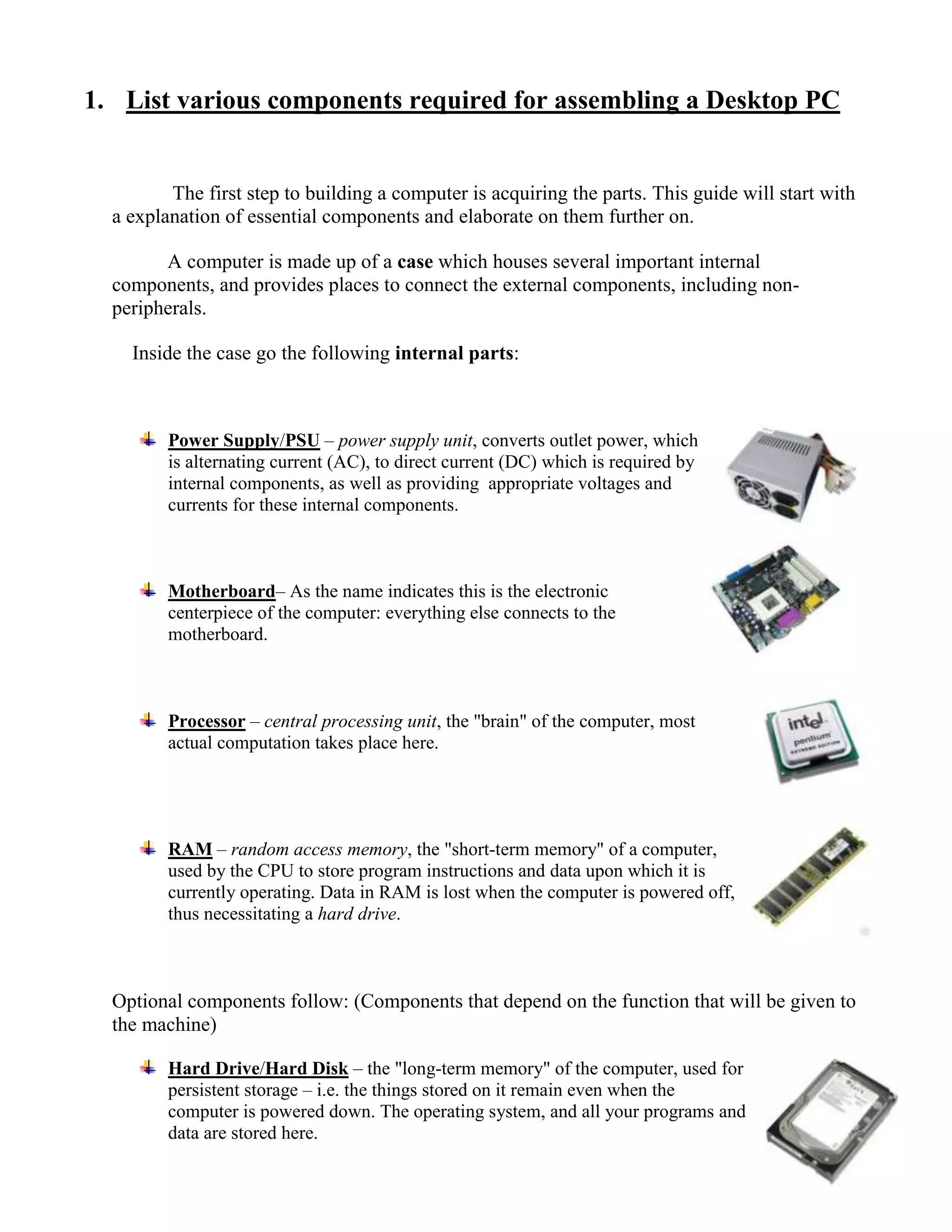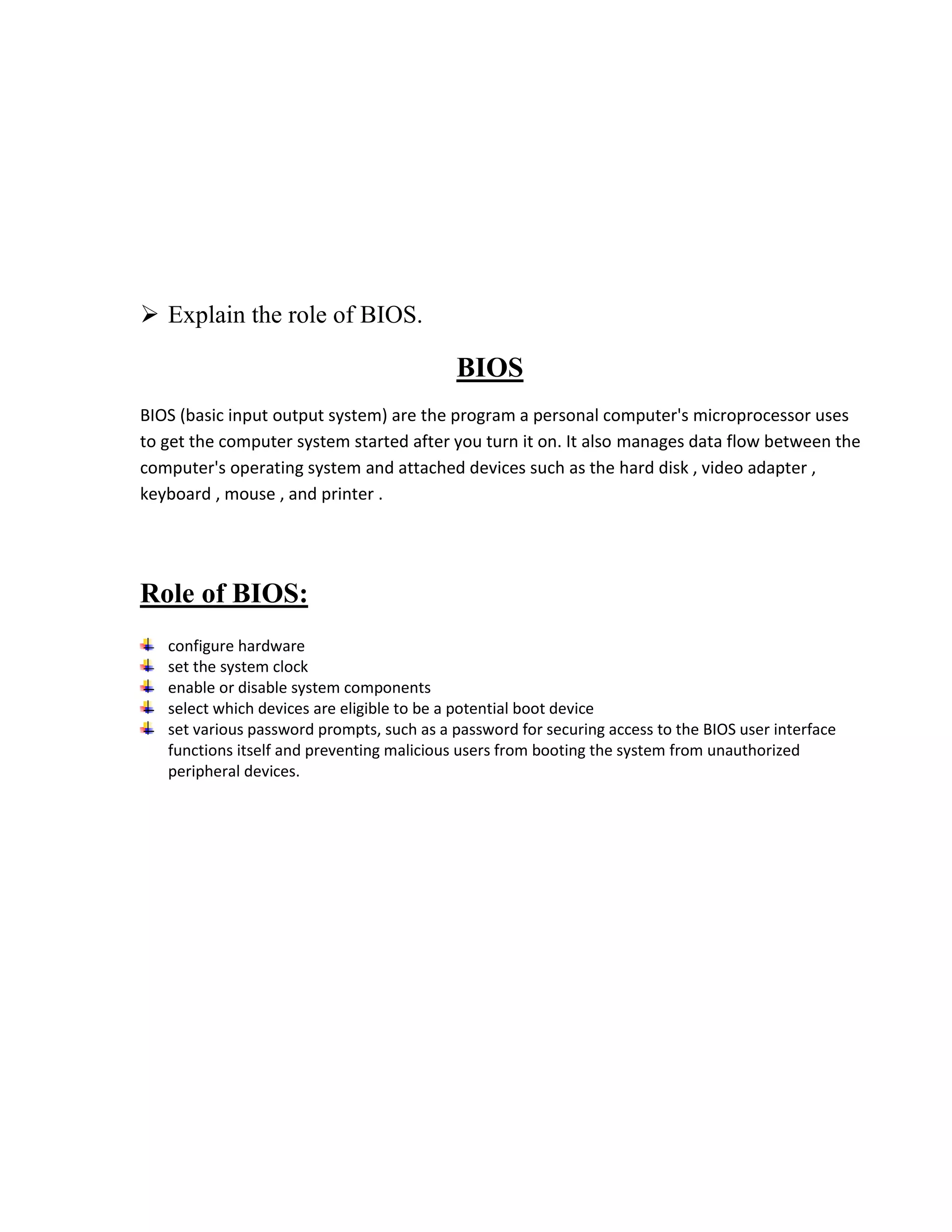The document provides instructions for assembling a desktop PC by listing the necessary components and assembly steps. The key components include the power supply, motherboard, processor, RAM, hard drive, video card, keyboard, mouse, monitor, and case. The assembly process involves installing these components one by one into the case, such as installing the motherboard, CPU, RAM, and connecting power cables. The document explains how to set up the BIOS and check that the computer is functioning properly on first startup.








